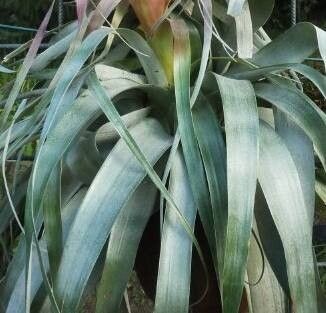Propagating Tillandsia borealis: A Gardener’s Guide to the Arctic Airplant
Introduction:
Tillandsia borealis, commonly known as the Arctic Airplant, is a fascinating and relatively rare species of epiphytic bromeliad. Unlike its more flamboyant cousins, T. borealis boasts a subtle beauty, displaying slender, grey-green leaves that form a compact rosette. Its diminutive size and tolerance of cooler temperatures than many other Tillandsias make it a prized addition to any collection of air plants, although its rarity means it’s not as widely available. Its propagation, consequently, presents unique challenges and rewards for the dedicated cultivator. While readily available for purchase from specialist vendors, the allure of propagating this unique plant from existing stock is strong.
Seed Germination:
Currently, there are no known reliable methods for seed germination propagation of Tillandsia borealis. The plant’s low reproductive rate in the wild and the specific environmental conditions necessary for successful seed germination remain largely unknown and challenging to replicate artificially.
Cuttings:
Propagating Tillandsia borealis from cuttings is also not viable. Unlike some other bromeliads, Tillandsia borealis does not readily produce offsets or pups which could be separated and rooted. Attempts at rooting detached leaf sections or stem cuttings have consistently failed.
Division:
Division is similarly not a practical method for propagating Tillandsia borealis. This species rarely, if ever, produces multiple growth points that can be separated to form independent plants. The plant tends to grow as a single rosette.
Tissue Culture:
Tissue culture offers the most promising (though still challenging) avenue for propagating Tillandsia borealis. This technique, involving the sterile culturing of plant cells or tissues on a nutrient medium, could potentially overcome the limitations of seed germination, cuttings, and division. However, establishing a sterile protocol for T. borealis and optimizing nutrient conditions for successful growth and development would require considerable expertise, resources, and likely extensive experimentation. Success hinges on finding the right medium, hormones, and aseptic techniques to induce shoot and root formation. The rewards would be significant, potentially allowing for larger scale propagation and preservation of this unique species.
Conclusion:
Propagating Tillandsia borealis presents substantial challenges across all conventional methods. While seed germination, cuttings, and division appear impractical based on current knowledge, tissue culture remains a theoretical possibility, demanding significant horticultural skill and resources. The rarity of this species further underscores the difficulty. However, the unique satisfaction derived from successfully propagating T. borealis—a plant that actively resists straightforward methods of reproduction— would be immeasurable. For aspiring propagators, a focus on research and access to tissue culture techniques holds the greatest potential. The journey, albeit difficult, promises a significant reward for those persistent enough to tackle the challenges involved in cultivating this unique and beautiful airplant.

